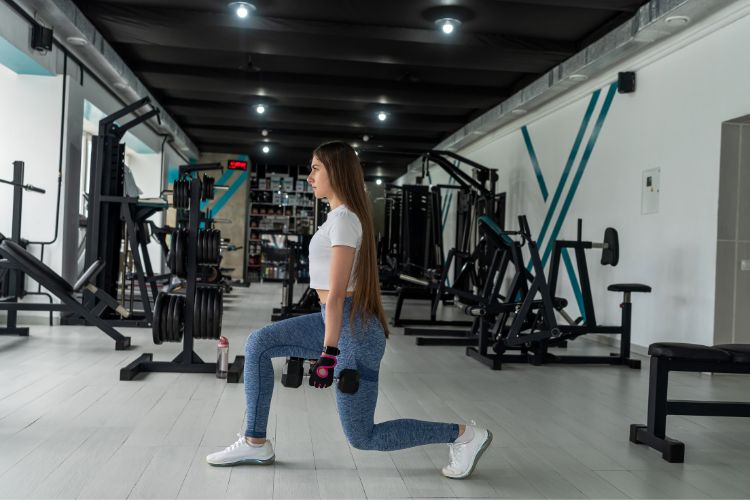Sign up for workout ideas, training advice, reviews of the latest gear and more.






In today’s fast-paced world, maintaining a healthy lifestyle can be challenging, especially for women who juggle multiple roles daily. A well-structured weekly workout plan is crucial for achieving fitness goals, whether they be weight loss, muscle tone, or overall health improvement. This comprehensive guide outlines a balanced workout regimen that caters to women of all fitness levels, ensuring a blend of strength, flexibility, and cardiovascular health.
Before diving into the workout plan, it’s essential to understand the components of a balanced fitness routine. A holistic approach includes strength training, cardio, flexibility exercises, and rest days. Strength training builds muscle and bone density, cardio improves heart health, flexibility exercises enhance mobility, and rest days allow for recovery.
Kickstart your week focusing on upper body strength. Incorporate exercises such as push-ups, bench presses, dumbbell rows, and shoulder presses into your routine. Aim for 3 sets of 8-12 repetitions for each exercise, ensuring you’re challenging your muscles while maintaining proper form.
Dedicate Tuesday to cardio and core strengthening. Start with 30 minutes of your favorite cardiovascular activity, such as running, cycling, or swimming. Follow up with a core-focused session, including planks, Russian twists, and leg raises. This combination not only burns calories but also builds a strong foundation for your body.
Wednesday is all about the lower body. Squats, lunges, deadlifts, and calf raises should be the staples of your workout. These exercises target the major muscle groups in your legs and buttocks, promoting muscle growth and improving balance. As with upper body day, aim for 3 sets of 8-12 repetitions.
Active recovery is crucial for muscle repair and growth. Opt for lighter, low-impact activities such as walking, yoga, or a gentle bike ride. These activities help keep the blood flowing, reducing muscle soreness and improving flexibility without overtaxing your body.
End the workweek with a bang by engaging in a full-body circuit workout. This session should combine upper and lower body exercises, interspersed with short bursts of cardio. For example, perform a circuit of push-ups, squats, burpees, and jumping jacks, doing each for 45 seconds with a 15-second rest in between. Repeat the circuit three times.
HIIT workouts are effective for burning fat and improving cardiovascular health. These sessions alternate between high-intensity exercises and short rest periods. An example HIIT session could consist of 20 seconds of intense activity, like sprinting or high knees, followed by 40 seconds of rest, repeated for 20-30 minutes.
Take Sunday to rest fully, allowing your body to recover and prepare for the week ahead. Use this day to reflect on your progress, set goals for the coming week, and engage in self-care activities. Rest is as crucial as the weekly workout plan themselves, providing your body with the necessary time to heal and strengthen.
Strength training is not just about building muscle mass; it’s also crucial for bone health, metabolism, and overall functional fitness. For women, especially, incorporating regular strength training can help counteract the loss of bone density that occurs with age, reducing the risk of osteoporosis. Moreover, muscle burns more calories at rest than fat, meaning strength training can boost your metabolism, aiding in long-term weight management.
Cardiovascular exercise, often referred to simply as cardio, is essential for heart health and endurance. Regular cardio weekly workout plan can help lower blood pressure, reduce the risk of heart disease, and improve mental health. The versatility of cardio means it can be easily tailored to fit into any lifestyle, whether it’s a brisk morning walk, an intense spin class, or a dance workout that brings joy as well as health benefits.
Often overlooked, flexibility and mobility exercises are vital for a well-rounded fitness regimen. These exercises, such as stretching and yoga, can improve joint range of motion, reduce the risk of injuries, and alleviate muscle soreness. Flexibility training also enhances posture and can relieve stress, promoting a sense of well-being that transcends physical health.
Rest days are an integral part of any workout plan. They allow the body to recover from the stresses of exercise, preventing burnout and overtraining. During rest days, the body repairs muscle fibers, replenishes energy stores, and adapts to the stress of exercise, leading to performance improvements. Listening to your body and incorporating rest when needed supports longevity in your fitness journey.
A balanced diet is a cornerstone of fitness. Nutrition fuels workouts and recovery, impacting your energy levels, performance, and the results you see from your exercise routine. Focus on a diet rich in whole foods, including vegetables, fruits, lean proteins, whole grains, and healthy fats. Proper nutrition supports muscle repair, energy replenishment, and overall health, making your workout efforts more effective.
Leveraging technology can enhance your fitness routine. Fitness trackers and smartwatches monitor your activity levels, sleep quality, heart rate, and more, providing insights into your health and progress. Many apps offer weekly workout plan ideas, tracking features, and personalized coaching, helping you stay on track with your fitness goals. Using technology wisely can motivate you and personalize your fitness journey.
A positive mindset is just as important as the physical components of a fitness routine. Setting realistic goals, celebrating achievements, and maintaining a positive outlook can significantly impact your motivation and persistence. Mental resilience enables you to push through challenges and setbacks, making your fitness journey not just about physical health but also about personal growth and self-discovery.
Finally, the role of community and support cannot be overstated. Joining fitness classes, online communities, or finding a workout buddy can provide motivation, accountability, and enjoyment. Sharing your journey with others creates a sense of belonging and can offer valuable support and encouragement.
A well-rounded weekly workout plan is the foundation of achieving and maintaining fitness goals. By incorporating a mix of strength training, cardio, flexibility exercises, and sufficient rest, women can build a healthy and sustainable fitness routine. Remember, the key to success is consistency, listening to your body, and enjoying the journey. With dedication and the right plan, achieving your fitness goals is well within reach.
Stay up to date on the latest women’s health, fitness and lifestyle trends and tips.